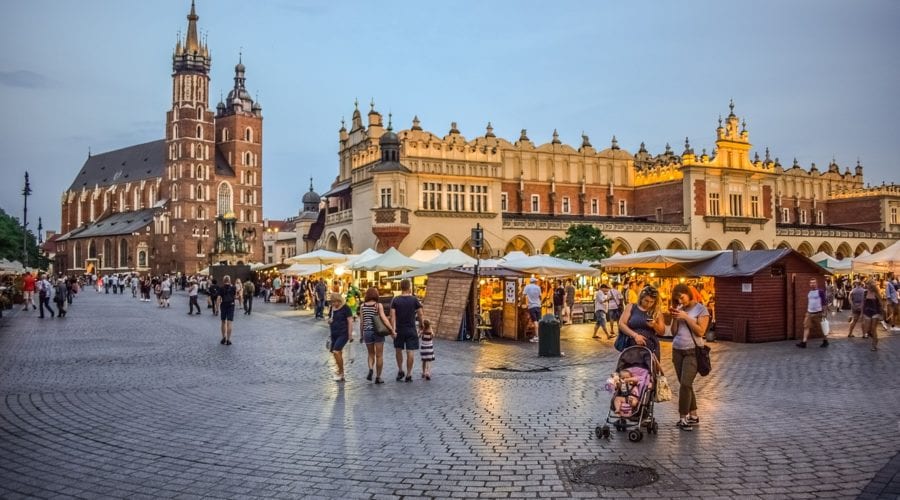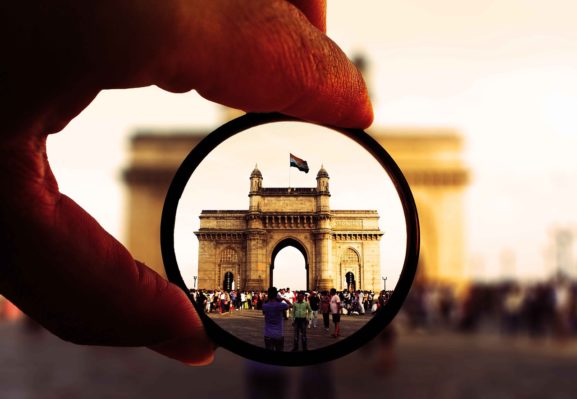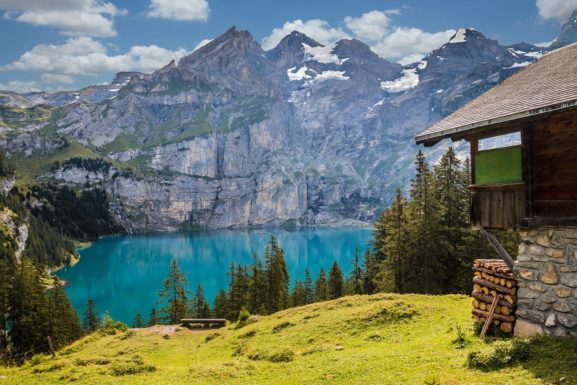The World’s Best Kept Secret, Krakow and Zakapane, Poland
As a former flight attendant, I’ve visited all European countries except Albania and Poland. Poland is Europe’s 5th largest country. Aside for Lech Walesa, Copernicus, the Pope and a decade of Polish jokes I never understood, I knew nothing of this land. However, my interest peaked because it will soon be hot on the tourist trail and because my Chicago husband’s family is from here. He accompanied me with a sense of delight in discovering his roots. I went to become educated and enriched by something new. We flew from Atlanta via JFK and Warsaw to Krakow for a mere 4 days. No rest for the weary with a head spinning itinerary. I prefer to visit cities in the off season to mingle with the locals. It provides a more authentic and intimate atmosphere.
On airport arrival, we’re cheerfully greeted by Pavel who will be our driver throughout. He holds a welcome sign “Suza Davis”. I say, “Hi, I’m Suzy from Atlanta.” I chuckled when he responded, “Yes, downstairs of USA.” We checked into Hotel Amadeus, a 16th century posh inn in the heart throb of town center. Prince Charles once bedded in our room, I’m told.
We set out to hunt for dinner. The illuminated Old Town was stunning and filled with so many young people, it made me feel elderly. 150,000 students reside in this university town. Krakow is Europe’s premier party scene where they stay out until the birds sing. This historic district holds highest concentration of bars and restaurants in the world. We suddenly discovered Pierogi Garden, home of the freshest Polish dumplings. They were stuffed with sauerkraut, lamb, beef, berries, chocolate and even peanut butter. There were 6 types of soups, all with beets which I abhor. After a dozen dumplings, I had a melted ewe’s milk cheese pancake which was beyond delicious.
Poland experienced countless invasions throughout its history. After being ravaged by the Germans and then the Russians, it finally achieved independence in 1989 with the collapse of Soviet communism. Krakow was wired for destruction near the end of WWII by the Germans. They planned to blow it up once the Russians took over, fortunately the war ended hours before the plan was carried out.
Today it remains one of the few cities remaining in its original form. With a population now of 780,000, it has morphed into a trendy international capital. Vibrant and modern yet somehow retains its traditional culture with regal architecture. It is in Krakow where one finds the spirit of the new Poland.
On day 2, we were greeted by Anna who was strikingly beautiful. We began in the web of cobbled streets in Old Town that was meant for walking. It was a maze of museums, chapels, galleries, cafes and hole in the wall pubs. Even in winter there was entertainment with street dancers, mimes, accordion players and on one corner, I watched a knight in armor break-dancing.
We entered Market Square, Europe’s largest medieval square where little has changed since 1257. It is crowned by the Bell Tower where a bugler plays at the top of the hour. It drives the residents crazy at night. A must see is Cloth Hall where fishmongers, cloth merchants and bakers have sold their wares since the 14th century. Now it’s a fabulous arcade of handicraft stalls.
We walked to the well preserved Jewish Quarter which is now edgy with artistic character. Poland once held Europe’s largest concentration of Jews at 3.5 million. Poland’s kings during the middle ages noted they were being expelled elsewhere and invited them in to augment the economy. Here they thrived until the holocaust and forced communism after WWII. There are now only 180 left. We viewed the ghettos where Spielberg’s famed movie was filmed and looked across the river to see Schindler’s factory.
Rick Steves writes that one must visit a milk bar here. Anna escorts us to one of these government subsidized cafes for the working class. They are a holdover from Poland’s communist past. Everything is astonishingly cheap. I ordered a bowl of homemade soup and cheesecake for $2.
We then visited Wawel Castle, a 12th century masterpiece and defining icon of the city’s pride. There were no queues as we walked its corridors of history. This was the residence of kings for 500 years. Anna explains its legend of the fire breathing dragon named Smok here who ate virgins for breakfast.
This was bolstered by the discovery of strange large bones in the 1400’s. (The bones are actually whale bones as this area on Europe was once under water eons ago.) The dragon thus became the symbol of the city and is omnipresent in souvenir shops. Anna then nudges us inside various beautiful churches, for me always as boring as paint by numbers, however they were exquisite. I ask if there are any Protestants here. She replied matter of factly, “Yes,one.”
The afternoon was spent on restaurant and hotel inspections. I loved the formal greetings and it’s always educational. I learn about local cuisine and accommodations in the best location for the best price. All hotels were fully booked. Jews and Catholics visit year round on religious pilgrimages or come for roots tours.
Krakow was recently rated in the top 10 European destinations. I now see why. Americans continue to rave over Prague which I now find passe with inflated prices and lower standards of service. It’s become as expensive as Rome. Eventually, Krakow may do the same once Poland converts to the Euro in 2012. For now one can splurge with affordable prices. Europeans flock here for 50-70% savings. Germans and Danes in particular come for dental and optometry needs. Medical tourism including plastic surgery is booming. I met an Austrian flight attendant who fly’s in monthly for spa treatments at half cost.
At night we dined at Wierzynek Restaurant, the world’s oldest that has served princes to tourists since 1364. It was delicious peasant cuisine (organic) of wild boar, roast ribs and heaping mounds of potatoes. I ask them to teach me some Polish, a Slavic language that is as impossible as a mouthful of alphabet soup. The word toilet has 5 syllables.
On the third day, we awoke to a gray, cold and wet day which gave us the appropriate ambiance for what we would see. Pavel drove us 60 km to Auschwitz. We were greeted by Yuri, our brilliant personal guide whose sole passion was to enlighten us on the unthinkable tragedies that took place here from 1940-45. I once visited Dachau, but this was the largest of concentration camps. This death factory killed 1.4 million people of 27 nationalities. Most were Jews. The others were gypsies, Soviets, Poles, gays, political dissidents and more.
We entered the gate reading, “Work will set you free.” Inside was a powerful reminder as we viewed the crematoriums, starvation cells, kilos of hair, endless eye glasses and a pond still gray from ashes 60 years ago. Most sobering to me was the children’s section. It held a sea of tiny shoes, dolls and meticulous German documentation of 230,000 little ones who suffered and died here.
We were driven to the extended camp of Birkenau (Auschwitz II), with its wooden barracks built to house 100,000 but eventually held 200,000+. Together in silence, the three of us walked a half mile to see the ruins of the gas chambers and memorial monument. At the end of our tour, Yuri said goodbye to us with this profound statement, “I’ve guided several holocaust survivors who visited here like tourists. They told me at the end that I am not able to present 1% of how bad it really was.” This was the most emotional touching site my eyes ever beheld.
Late afternoon we visited the famous Wieliczka Salt Mine. This mysterious and vast underground city 3 miles long has extracted salt for 800 years. The World Heritage Site draws a million visitors per year and it looks as though they all arrived today.
Our guide Justina seemed to have an obsession with salt, but it was merely the love of her job as guide. She said to follow her down 836 steps which was a better work out than a Stairmaster. Caves bore me, but this site will remain etched in my mind forever. Imagine underground chapels, ornate sculptures, chandleries and life size figures carved entirely from salt or a restaurant and a post office 380′ below street level. It was spectacular. For centuries miners and horses spent their lives here. They remained healthy in this rich micro-climate. It has to do with magnesium ions, whatever those are? Today people come to the healing chambers of the treatment complex for isolation in natural air purity.
Day 4. I continually search the globe for unique things or places to present to fellow travelers. Today I found it in Zakapane. For years now, a friend of mine insisted I visit this mountain resort with the funny name I could never remember. We drove to the pure air of the Tatra Mountains with Eva, our expert guide that day. She said this adventure destination of 60,000 residents swells to 200,000 nearly year round. In summer they come for mineral spas and Alpine hiking. In winter they come to ski. That week Zakapane hosted the International Ski Jumping Competition.
Here was a charming town of artists and Giorake, an ethnic group of mountain highlanders. These wandering shepherds trace back to the 15th century. They love to dress in their colorful clothes for tourists. They live on cheese or anything smothered in cheese. We visited a cheese market the size of Switzerland. As far as my eyes could see, there were sheep and goat cheeses artistically sculpted into every shape conceivable. We also toured the Aqua Park with an Olympic sized mineral hot spring mineral pool and rode cable cars high into the mountains for breathtaking scenery.
It was a most productive and enjoyable day tour. I found a local tour company that arranges fun activities for groups such as horse sledding through the forest, dog sledding and the new “snow rafting” in rubber rafts sloshing toboggan-style down the mountain. At the huge outdoor market with countless ethnic stalls, I purchased a striking leather and fur coat for $260 that fashionably looked 6 times its price.
There’s so much I didn’t get to see on this short visit. On my next return, I’ll do the new “Crazy Communism Tour.” Outside Krakow is Nowa Huta, once a severe socialist suburb of forced industrialization. Massive steelworks factories overtook the rich farm land. Doctor and professors were sent here to work. Miles of concrete tenement blocks were erected to house them.
On tour you can discover experience firsthand Stalin’s gift to Krakow by riding in a classic East German Trabant car out to Nowa Huta. A dinner of salted bread, pickles and vodka is included, followed by dancing at a retro 70’s era disco.
Under the yoke of communism, the Poles refused to give up their religion. Stalin said, “Implementing communism here is like saddling a bull.” Faced against such a determined spirit in the people, he gave up. I”m amazed at all the obstacles this stoic country has overcome.
If you’ve been there and bought the t-shirt of London, Paris, Madrid or Athens, I encourage you to visit undiscovered parts of Europe. Krakow is destined to become the next Prague. It oozes with history, friendly faces, hearty cuisine, and it won’t break your pocketbook. If you can visit the new Poland, please don’t tell anyone about Zakapane, one of the world’s best kept secrets.
Source by Suzy Davis


